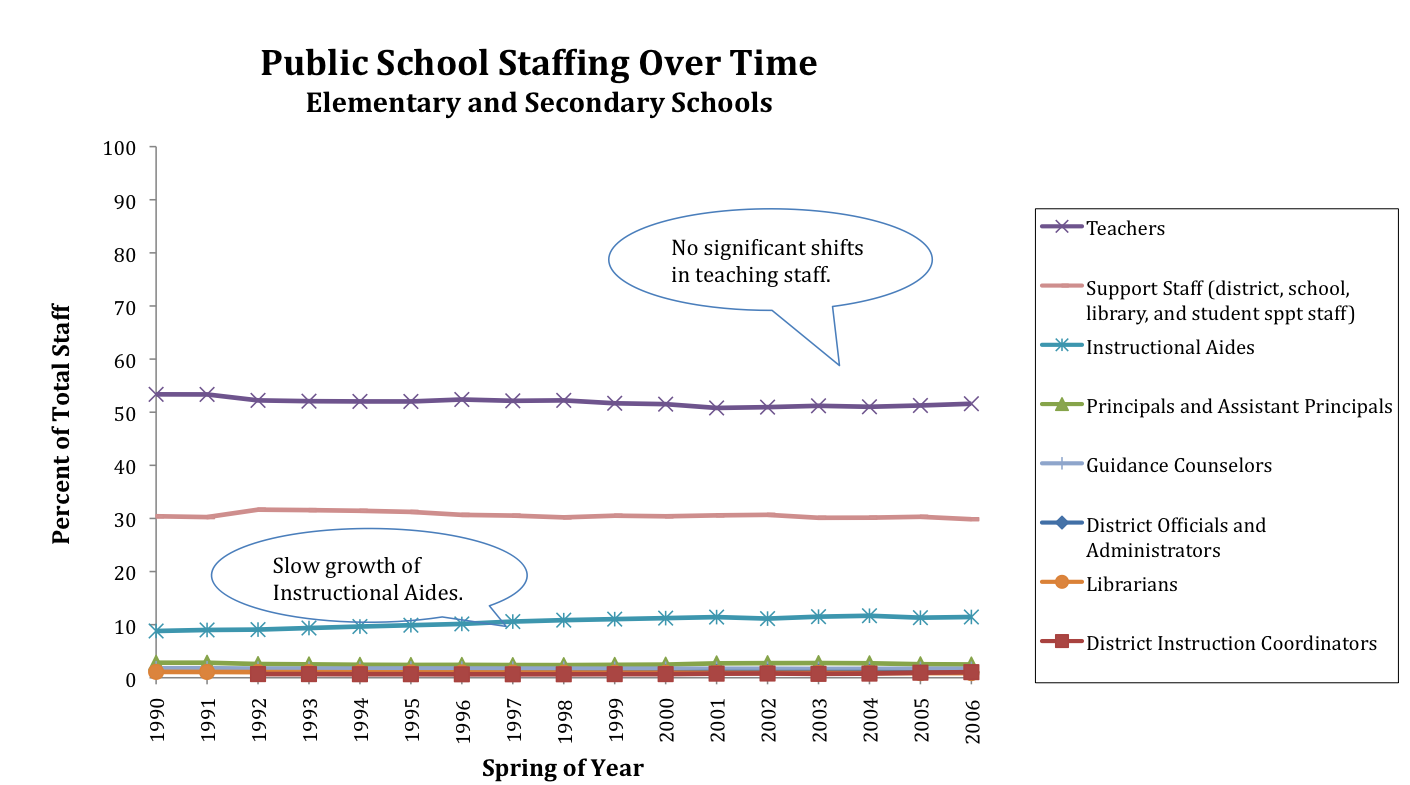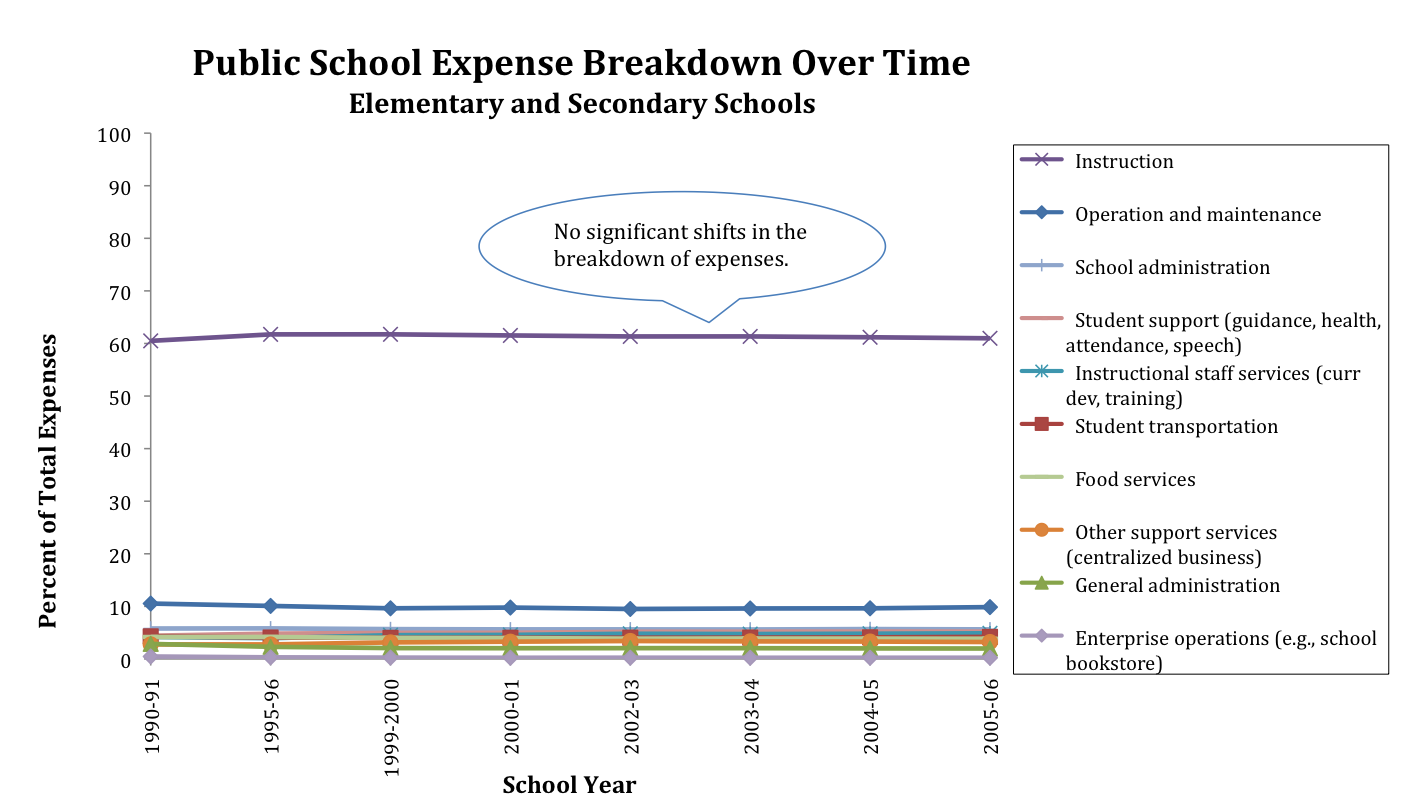How Do Schools Distribute Staffing and Funding?
Why is this question important?
All organizations feel resource shortages, be they staff or funds. Looking at the breakdown of staffing and funding can help show shifts in school priorities.
See further discussion below.


Sources: Staffing - Digest of Education Statistics (2008) , Table 80 , National Center for Education Statistics (NCES), Institute for Education Sciences (IES), U.S. Department of Education
Expenses - Digest of Education Statistics (2008) , Table 179 , National Center for Education Statistics (NCES), Institute for Education Sciences (IES), U.S. Department of Education
Results: No significant change in staffing levels, but a small increase in the percent of Instructional Aide staff over time. The distribution of school expenses shows little change over time.
Implications: Stable distributions of staff and funds over time undermines the idea that administrative overhead is consuming an increasing quantity of school resources. Lack of change in staffing and funding also indicates maintenance of the status quo versus reforms that impact these two areas.
Authors: National Center for Educational Statistics, Institute for Education Sciences, U.S. Department of Education
Publishers: National Center for Educational Statistics, Institute for Education Sciences, U.S. Department of Education
Study Description: The analysis collects school staffing and expense data obtained from the National Center for Education Statistics (NCES) Digest of Education Statistics (2008). This data of the percent breakdown of school staffing and school expenses were analyzed between 1990 and 2006.
Definitions:
Support Staff includes school district administrative support staff, school and library support staff, student support staff, and other support services staff.
Student support includes guidance, health, attendance, and speech pathology services.
Instructional staff services includes curriculum development, staff training, libraries, and media and computer centers.
Other support services includes business support services concerned with paying, transporting, exchanging, and maintaining goods and services for local education agencies; central support services, including planning, research, evaluation, information, staff, and data processing services; and other support services.
Enterprise operations includes operations funded by sales of products or services (e.g., school bookstore or computer time). Includes very small amounts for direct p
